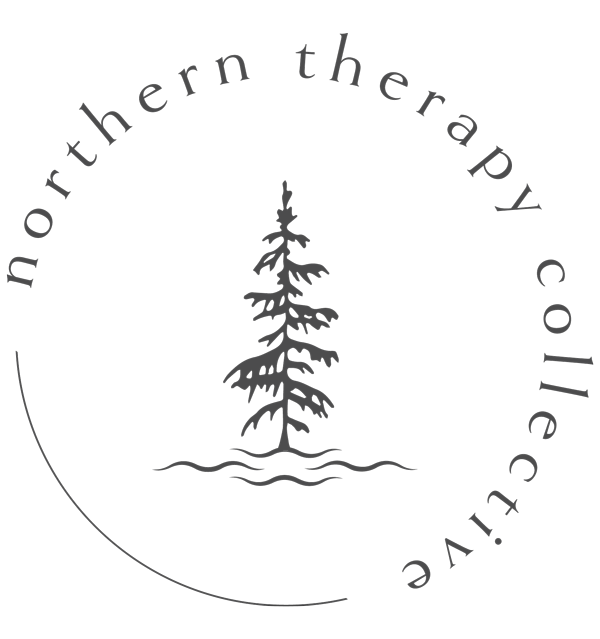Therapy on the Big Screen: Examining Representations in Popular Culture
If you’ve ever asked a lawyer friend for their opinion on the TV show Suits – or a doctor what they think of Grey’s Anatomy – you’ve probably received a wide range of comments that go all the way from “they totally nailed it” to “that would never, ever, (ever!) happen.”
Whether you’re an accountant watching The Office, or a teacher watching Dead Poet’s Society, it can be fun to see your profession depicted on the big screen and consider how close the artists came to representing what you actually do in your day-to-day life.
With that said, we thought it would be fun to spotlight some representations of therapy in popular culture and, for each of these, consider: (1) how did psychotherapy play a role in the film/show, (2) what did they get right, and (3) where is there room for improvement?
1) GOOD WILL HUNTING (1997)
Quick Summary (For Those Who Haven’t Seen): Matt Damon plays Will Hunting, a young man working as a janitor at the prestigious MIT in Boston. Having led a difficult life thus far (in and out of foster care as a child, multiple arrests as a young man) he has struggled to live up to his full potential but is nevertheless exceedingly bright. After solving an impossibly difficult math equation on nightshift, he is “discovered” and subsequently mentored by one of the school’s most notable professors and placed on the fast-track for high-level government work due to his obvious intelligence. Part of this mentorship process involves regular therapy sessions with seasoned therapist Sean Maguire; portrayed by Robin Williams in an uncharacteristically “quiet” performance.
The Role of Therapy: Will’s sessions with Sean are among the best scenes of the movie and show a real transformation in the therapeutic relationship, which starts out as very contentious (Will attending therapy involuntarily/as part of probation) but ends in an incredibly warm and transformative place. Will’s fractured sense of self and ongoing attachment issues are a key focus of the movie and his time in therapy (with Sean) is a critical part of his healing and evolution throughout the film.
What it Gets Right: It’s probably not a stretch to say that Robin William’s Oscar-winning performance inspired a generation of therapists to enter the helping profession (four words: “it’s not your fault”). His grounded portrayal of an obviously skilled – yet flawed and still human – clinician provide much-needed contrast to colder depictions of the “removed expert” that we tend to see in other settings (see also: the montage of other therapists Will encounters before finally landing with Sean). More specifically, the movie demonstrates how use of silence (there’s a scene where they spend almost an entire 50-minute session in silent stalemate), humor (see “idiosyncrasies” clip below), and strategic self-disclosure (Sean sharing about the loss of his wife), can help build a sense of comfort and trust in the therapeutic space.
Room for Improvement: The most obvious departure from “real-life” is the scene where Sean loses his temper and gets verbally and physically aggressive with Will (pushing him against a wall); something that would obviously never happen in a therapeutic context and we’ll chalk up to Hollywood dramatization. The more subtle critique to be had is the extent of self-disclosure that Sean uses with Will (depicted as effective and helpful in this case, but ethically debatable in other contexts).
DISCLAIMER: This clip contains strong language that may offend some viewers.
2) 50/50 (2011)
Quick Summary (For Those Who Haven’t Seen): Joseph Gordon Levitt plays Adam; a man in his late 20’s who is suddenly diagnosed with spinal cancer – a condition for which there is a 50/50 survival rate. The remainder of the movie tracks Adam’s attempts to navigate and cope with this new reality; a process which involves leaning on best friend Kyle (Seth Rogen) for support and comedic relief, removing himself from an unhealthy relationship with girlfriend Rachel (Bryce Dallas Howard), and attending regular therapy sessions at the hospital with new therapist Katherine (Anna Kendrick).
The Role of Therapy: Adam’s sessions with Katherine occur sporadically throughout the movie and serve as key markers of his evolving emotional state throughout the film. The tone of their meetings echo some familiar beats of the well-known “stages of grief”, with earlier sessions showing more emotional numbness and denial, and later sessions focusing more on feelings of anger, fear and sadness.
What It Gets Right: Apart from the depiction of hospice-focused therapy (where a life-threatening illness is central to the work), the movie does a great job showing what it feels like to be a new therapist in the field. Katherine is fairly transparent about her lack of practical experience (being in the final stages of her doctorate) and it’s clear that she relies heavily on theoretical knowledge of “best practice” techniques when feeling out of depth with real-life clients. Fortunately, this awkward stage of therapist development doesn’t prevent her from eventually making a meaningful connection with her patient.
Room for Improvement: The main critique here is unfortunately a BIG one and that’s the fact that (spoiler alert) Katherine and Adam become romantically involved by the end of the movie. Sadly, this is something of an age-old problem when it comes to depictions of therapy in popular culture (see also: Tony kissing his therapist, Dr. Malfi, in Season 5 of The Sopranos and Harvey dating his ex-therapist Paula throughout most of Season 7 on Suits, to name just a few others). Similar to Good Will Hunting’s “pushing scene”, this is something that would never happen in real life (unless the therapist in question is fine with the possibility of losing their license!) but nevertheless seems to persist as a much-used Hollywood trope.
3) TO THE BONE (2017)
Quick Summary (For Those Who Haven’t Seen): Ellen (Lily Collins) is a woman in her early twenties navigating treatment for a persistent eating disorder. Having been in and out of various programs – with minimal success – in her teenage years, she embarks on a new treatment approach with Dr. Beckham (Keanu Reeves) which involves a combination approach of group living and family therapy.
The Role of Therapy: It could be argued that the vast majority of the movie is spent depicting therapeutic approaches for eating disorders (from group programming, to medical monitoring, to individual and family therapy sessions), so it’s certainly a key component of the film!
What it Gets Right: Upon its release, the movie was praised for its accurate and candid depiction of eating disorders and the associated “compensatory strategies” (aka: the range of efforts used to control shape and weight), without glamorizing or fetishizing these behaviors. It also does an admirable job of showing the ambivalence and resistance to change that can often exist in those with eating disorders, as well as the emotional toll these illnesses can take on the families and loved ones of the affected person.
Room for Improvement: In terms of depicted treatment approaches; there are aspects that are certainly accurate and worthy of praise (most notably the group and family focused therapy sessions), but other factors are decidedly less true. For instance, in the group home, clients are allowed to eat “whatever they want” for dinner (even something as minimal/small as a spoonful of peanut butter) when we know – in real life – most ED programs emphasize a consistent routine of high-quality nutritional intake. The film also seems to imply that Ellen’s family history is a significant/causal factor for her anorexia when, in reality, we know there is very rarely a single “cause” of eating disordered behaviors and families often play an integral role in the recovery process.
DISCLAIMER: This clip contains triggering (eating disorder) content and strong language that may offend some viewers.
4) BIG LITTLE LIES (2017 & 2019)
Quick Summary (For Those Who Haven’t Seen): Big Little Lies follows a group of affluent Californian mothers (played by Reese Witherspoon, Nicole Kidman, Laura Dern & Zoe Kravitz), whose lives are thrown into turmoil – and unravel to the point of murder – when single-mom Jane (portrayed by Shailene Woodley) moves to town and disrupts the existing dynamics.
The Role of Therapy: Dr. Amanda Reisman is a couples therapist who features sporadically throughout the series. In Season 1, she works primarily with the Wrights (played by Nicole Kidman and Alexander Skarsgard) as they work to address domestic violence concerns within their marriage. In Season 2, she continues her work with Celeste Wright (Nicole Kidman) and begins seeing the MacKenzies (Reese Witherspoon & Adam Scott) in the aftermath of an extra-marital affair.
What it Gets Right: Focusing more on Season 1 and the domestic violence concerns, many therapists have praised Big Little Lies for its depiction of a therapist reacting to DV (domestic violence) disclosures. Dr. Reisman’s validation of the inherent fear that often accompanies these life-threatening situations, and her encouragement of proactive planning, are largely aligned with “real-life” approaches. The show also succeeds in showing the hesitancy of DV survivors to categorize their experiences as “abuse” and the many reasons why they stay in these types of relationships.
Room for Improvement: There is certainly an argument to be made that Dr. Reisman is perhaps too directive in her response to Celeste’s disclosures. As an example, in the later episodes of Season 1, Dr. Reisman advises Celeste that she should be renting a secondary apartment as part of her escape strategy and (generally speaking) therapists are not in the business of telling clients exactly what they should do in response to challenging circumstances. Others have highlighted the fact that Dr. Reisman continues to see Celeste individually after initiating joint/couples therapy, which is an unconventional practice as well.
DISCLAIMER: This clip contains triggering (domestic violence) content.
5) TED LASSO (2017)
Quick Summary (For Those Who Haven’t Seen): Ted Lasso is the story of a bumbling American soccer coach who embarks on a quest to help a struggling British football club regain their competitive status. Largely considered a comedy, with the potential to be quite broad, the writers took an ambitious (and arguably successful) swing at incorporating a prominent mental health storyline into the second season. This occurred, in part, through the introduction of a new character named Dr. Sharon, the team’s official therapist, who is brought in to help process some of the team’s recent losses and athletic “yips”.
The Role of Therapy: While initially resistant and skeptical of the therapeutic process, Ted slowly opens up to Dr. Sharon over the course of the second season and eventually processes some difficult personal topics, including: the loss of his father by suicide, his separation from wife Michelle, and his desire to be a good father to son Henry.
What it Gets Right: It could be argued that Dr. Sharon is one of the better examples of a boundaried therapist on television, to date. She’s cooly assertive and confident in her abilities but doesn’t push Ted to open up until he is ready to do so. It’s also interesting to see how the show uses Ted to depict some of the common myths and biases that clients can have about therapy – some of which are more negative and cynical (as demonstrated in the clip below) and some of which are more humorous and benign (in the full episode, Ted begins the scene by lying flat on the couch “because that’s what you do, right?”)
Room for Improvement: Apart from a late-season house call that occurs when Ted has a breakdown (the boundaries of which are debatable, depending on the specifics of their therapeutic agreement) the main critique seems to be that some viewers find Dr. Sharon to be standoffish and “frosty” in her early interactions with Ted; an attitude that is arguably counter-productive to building a warm and trusting rapport. But if this is her main offence, we could argue it’s preferrable to some of the other – more problematic – depictions of therapists in pop culture!
DISCLAIMER: This clip contains strong language that may offend some viewers
HONORABLE MENTION:
SHRINKING (2023 – Present)
As a show that’s entirely dedicated to the depiction of therapists and their work with clients, we would be remiss not to mention Shrinking as part of this conversation about therapy in pop culture. That said, we’ve already touched on many of the pros and cons associated with this show in a previous blog post (as part of our “Recommendations” series) so feel free to click here if you want to read more!

DISCLAIMER: All content produced by Northern Therapy Collective is intended for general knowledge and entertainment purposes only. This information does not constitute official clinical advice, and should not be considered a substitute for formal treatment.




